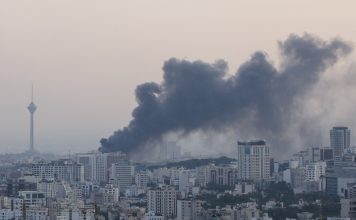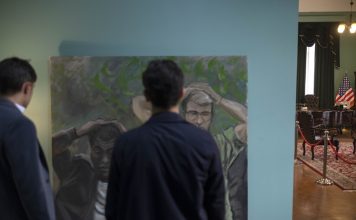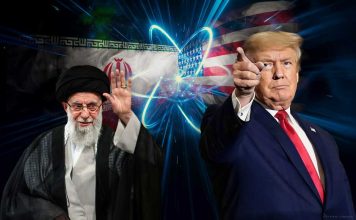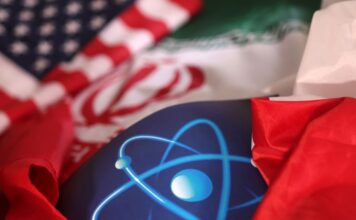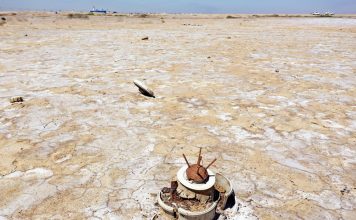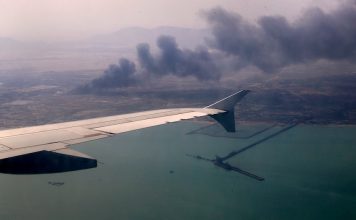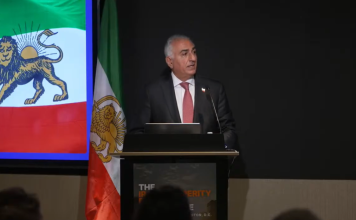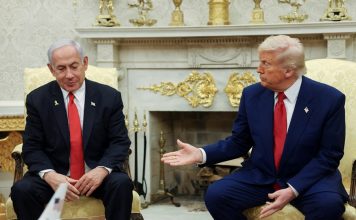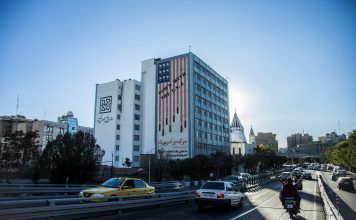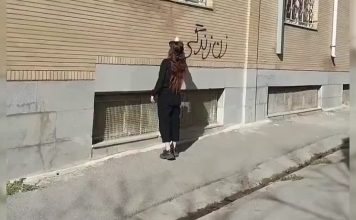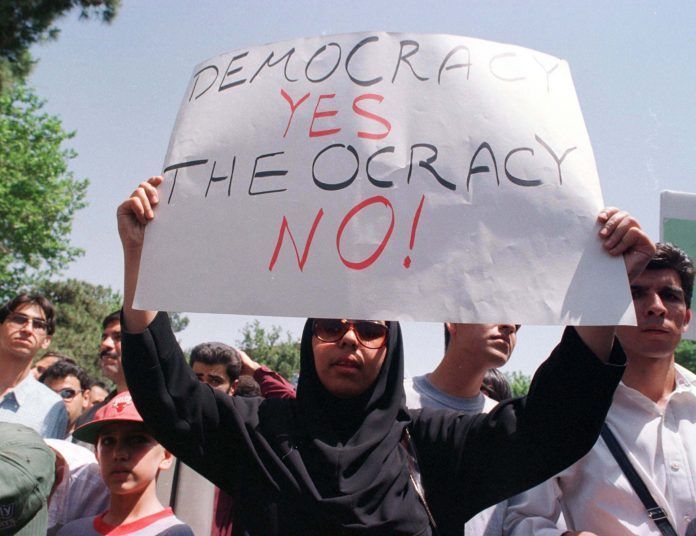
July 9 marked the 23rd anniversary of the Iranian university student protests, known as the “18th of Tir” (July 9) and the “Kuye Daneshgah Disaster.”
Following a peaceful demonstration on July 8, 1999, in Tehran, sparked by the closure of the reformist Salam newspaper, security police carried out a night raid on a Tehran University dormitory during which a student was killed.
The incident sparked a nationwide protest that lasted six days, resulting in seven deaths and many injuries. According to human rights organizations, several students disappeared during the protest, and between 1,200 and 1,400 people were arrested by the Iranian authorities.
[aesop_image img=”https://kayhanlife.com/wp-content/uploads/2022/07/tuy_hdu.jpeg” panorama=”off” credit=”By Ahmad Barakizadeh ” align=”center” lightbox=”off” captionsrc=”custom” caption=”The Legacy of Student Protests And Suppression.” captionposition=”left” revealfx=”off” overlay_revealfx=”off”]
Besides widespread national protests against the Islamic Republic in the past few years, pro-democracy and nationalist sentiments have gained strength in universities which are arenas for exchanging views.
To mark the 23rd anniversary of the 1999 student protest, 285 university students in Iran and Germany released a statement recognizing Crown Prince Reza Pahlavi as “the official national figure in the fight to change the despotic Islamic Republic regime.”
“We trust and support him,” the statement added. “The Iranian movement to break free from the Islamic Republic has grown and spread more than ever.”
The 1999 student demonstration was arguably the precursor for all subsequent unrest, including the 2009 demonstrations against the results of the elections that handed incumbent President Mahmoud Ahmadinejad a second term in office; the nationwide protests in January 2018 against the government’s economic policies; and the nationwide uprisings in November 2019 — known as “Bloody November” — sparked by the massive fuel price hike, which reduced in 1,500 deaths, scores of injuries and many arrests.
Irrespective of their underlying economic, political and social causes, most protests in the past decade have morphed into a movement against the Islamic Republic’s rule, reflected in signature slogans that call for regime change, including “Reformists, Conservatives, Your Time Is Up.”
Some argue that although the closure of the Salam newspaper sparked the 1999 student protests, it gave the Iranian authorities an excuse to silence the dissent and discontent that had gained strength in the years following the 1979 Islamic Revolution.
The Islamic Republic closed all universities between 1980 and 1983 as part of a broader “Cultural Revolution” to purge academia of Western and non-Islamic influences. By the time universities reopened, student movements had weakened significantly.
[aesop_image img=”https://kayhanlife.com/wp-content/uploads/2022/07/titre-1-no-369_18Tir1401.jpg” panorama=”off” credit=”Illustration by KL./” align=”center” lightbox=”on” captionsrc=”custom” captionposition=”left” revealfx=”off” overlay_revealfx=”off”]
After the Iran-Iraq War (1980-1988), the Islamic Republic escalated its campaign to crush public discontent and opposition.
The closure of newspapers, gross human rights violations, the crackdown on student protests, and mass executions of political prisoners and dissidents took place during the presidency of the late Akbar Hashemi Rafsanjani (in office from 1989 to 1997), known as the “Commander of Reconstruction.”
Some argue that the Islamic Republic’s relaxing and tightening political climate was part of a deliberate two-pronged tactic to allow students to vent their pent-up frustration and identify those whose ideas did not fit the regime’s ideological framework or were highly critical of the state.
Some students opposed the Islamic Republic, including Akbar Mohammadi, who was arrested during the July 9 protests. He died in prison after being tortured and going on hunger strike. Despite the heavy presence of security and intelligence agents at the ceremony to mark the seventh day of his death, several pro-democracy and opposition activists and dissidents spoke at the event.
According to Nazenin Ansari, the managing editor of Kayhan London and Kayhan Life, who was working with Voice of America (VOA) at the time, Akbar Mohammadi was arrested in July 1999.
Mr. Mohammadi urged Ms. Ansari during a phone conversation to let all Iranians living abroad know that there were many young Iranians like him who were going to stay in the country and continue the fight, adding: “It is enough for us; they know that we exist and who we are.”
Shortly after the 1979 Revolution, the Islamic Republic eliminated any left-wing and nationalist student movements, replacing them with Islamic societies in universities.
In a meeting with representatives of the Islamic societies, Ayatollah Ruhollah Khomeini, the founder of the Islamic Republic, urged them to “strengthen their unity,” which ultimately led to the establishment of the student organization, the “Office for Strengthening Unity” in 1979.
The organization paved the way for creating “Muslim Student Followers of the Imam’s Path,” whose members took over the American Embassy in Tehran in November 1979 and held 52 U.S. embassy diplomats and citizens hostage for 444 days.
The Office for Strengthening Unity fueled the Cultural Revolution in the early 1980s and eventually became the Islamic Republic’s arm for controlling the universities’ intellectual climate.
After Ayatollah Khomeini’s death in June 1989, Ayatollah Ali Khamenei became Iran’s Supreme Leader. When reformists and conservatives (later the Principlists) emerged as the main political factions in Iran in the 1980s, the Office for Strengthening Unity reportedly established a link with reformists to control the ideological climate in universities.
EXCLUSIVE – U.N. Expert Backs Probe into Iran’s 1988 Killings, Raisi’s Role
The Islamic Republic security and intelligence apparatus cracked down on opposition student movements, including pro-democracy, constitutionalists, and pro-monarchy groups, preventing them from organizing themselves in universities.
After the emergence of the reformist faction on the Iranian political landscape — arguably an outgrowth of the establishment — some people on the left found a home in the Office for Strengthening Unity.
Like the Islamic Republic regime, the Office for Strengthening Unity is composed of traditional left and Islamists, which is why most secular, pro-democracy and nationalist students stayed away from the organization.
Subsequently, the reformists used the student movements, representing progressive thoughts, to promote and further their agenda. So, the students’ primary “duty” was to criticize the opposition conservative faction and promote the reformists’ agenda.
One of the reformist faction’s main objectives was to marry student movements with street protests to organize the broader social discontent around its plans and tactic of “bargaining from below and scoring from above.”
By the 2000s, most reformists’ projects had failed. Collective intelligence and national awareness, both in society and in academia, had convincing arguments against theocratic rule.
The Islamic Republic’s complete failure to tackle the country’s economic crisis prompted the public to look to its recent past to revive pro-democracy sentiments, and call for an open society where citizens’ human and civil rights are guaranteed. Despite the newly energized atmosphere, the Islamic Republic continued to oppress its people.
Ultimately, the Islamic Republic’s manufactured concepts of “Religious Democracy,” “Religious Enlightenment,” and “Reforms” did not withstand the reality test, and in time many of its architects abandoned those ideas as propaganda tools.
As a result, the slogan “Reformists, Conservatives, Your Time Is Up” was adopted by students at Tehran University during the January 2018 nationwide protests.
In recent years, several former student members of the Office for Strengthening Unity have joined political groups opposing the Islamic Republic and the 1979 Revolution.

